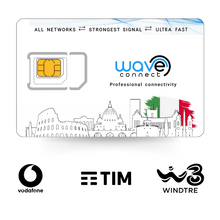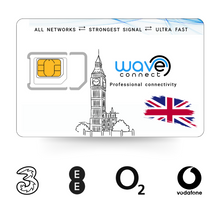Cómo se conecta tu dispositivo a una red celular: más que solo barras de señal
¿Alguna vez te preguntaste por qué tu dispositivo se conecta a una torre de operador en lugar de a otra? Descubre la diferencia fundamental entre los dispositivos que priorizan... escaneo de frecuencia y aquellos que buscan la mejor calidad de señal, y cómo esto afecta su conectividad.

💡 Resumen
Estrategia 1: "Primera frecuencia" (prioridad de velocidad)
- Meta: Tiempo de conexión más rápido.
- Acción: Se conecta a la primera frecuencia disponible que cumple un requisito de señal básica.
- Compensación: La conexión puede ser rápida, pero la calidad/velocidad de la señal puede ser deficiente si la red está congestionada.
Estrategia 2: "Mejor señal" (Prioridad de calidad)
- Meta: Rendimiento más estable y óptimo.
- Acción: Escanea, mide y selecciona la señal con el la más alta calidad (RSRP/RSRQ).
- Compensación: La conexión inicial es un poco más lenta; el equipo tiende a ser más caro Debido al complejo hardware/software.
🧐 El apretón de manos invisible: Conexión a una torre celular
Al encender su dispositivo (ya sea un teléfono inteligente, una tableta conectada o un módem IoT), se inicia un complejo e invisible proceso de "intercambio de información" para establecer una conexión con su operador de red. Este proceso va mucho más allá de simplemente encontrar la torre de telefonía móvil más cercana; implica una sofisticada estrategia de escaneo, selección y registro.
En el centro de esta estrategia hay dos filosofías principales que su dispositivo puede emplear, y la distinción entre ellas es clave para comprender su conectividad en el mundo real.
Estrategia 1: El enfoque de "Primera frecuencia" (Priorización de frecuencias)
Algunos dispositivos están programados para priorizar la velocidad y la eficiencia al establecer una conexión. Básicamente, buscan... frecuencias conocidas y disponibles antes analizando completamente la calidad de la señal.
Cómo funciona:
- Escaneo rápido: El dispositivo escanea rápidamente una lista preprogramada de bandas de frecuencia (por ejemplo, Banda 2, Banda 4, Banda 13 para LTE) autorizadas por el operador.
- Primero en llegar, primero en ser atendido: Se conecta a la primera banda de frecuencia disponible en una torre celular cercana que cumple con un umbral de señal mínimo aceptable (una señal de "suficientemente buena").
- El Pro: Este método es rápido y el resultado es precios de equipos más bajos Gracias a la simplificación de los requisitos de hardware y firmware, se reduce el tiempo necesario para establecer una conexión inicial, lo cual es ideal para un dispositivo que se inicia por primera vez o se recupera de una pérdida temporal de servicio.
- La estafa: Dado que prioriza la velocidad de conexión sobre la calidad, el dispositivo podría conectarse a una torre o banda de frecuencia que sea disponible pero muy congestionado o tiene un servicio ligeramente más débil que una frecuencia alternativa que no se molestó en verificar. Esto puede provocar velocidades de datos más bajas o problemas de calidad de llamada, incluso si el indicador de señal parece aceptable.
Este comportamiento se observa a menudo en módems o dispositivos más antiguos donde el sistema prioriza un confiable "sí, estoy conectado" sobre un optimizado "sí, estoy conectado al mejor servicio disponible".
Estrategia 2: El enfoque de la "mejor señal" (priorización de la calidad)
Los dispositivos modernos de gama alta y los equipos industriales sofisticados a menudo emplean una estrategia centrada en calidad de la señal y eficiencia de la red (a menudo denominado Selección de celdas y Reselección celular).
Cómo funciona:
- Escaneo profundo y medición: El dispositivo escanea múltiples bandas de frecuencia y torres disponibles, tomando imágenes detalladas Potencia recibida de la señal de referencia (RSRP) y Calidad de la señal de referencia recibida (RSRQ) mediciones.
- Seleccionando lo mejor: Utiliza algoritmos para comparar estas mediciones y selecciona la señal de la más alta calidad desde la mejor torre de telefonía celular disponible, independientemente de la banda de frecuencia en la que se encuentre.
- El Pro: Esto conduce a una mayor Conexión estable y optimizadaAl elegir una celda menos congestionada o una banda de frecuencia con mejor propagación de señal, el dispositivo garantiza las velocidades de datos más rápidas y la conexión de voz más confiable posible en esa ubicación.
- La estafa: El proceso de conexión inicial puede tardar un poco más, ya que el dispositivo debe escanear y evaluar completamente a todos los candidatos antes de tomar una decisión. Además, los complejos chipsets y firmware necesarios para esta gestión avanzada de red suelen resultar en... precios más altos de los equipos.
Un dispositivo que utilice esta estrategia monitoreará activamente las torres circundantes y puede realizar una Entregar a una torre más fuerte o menos congestionada sin problemas, incluso cuando está estacionaria, para mantener un rendimiento óptimo.
🔑 Por qué esto es importante para tu conectividad
La estrategia de conexión del dispositivo puede explicar peculiaridades de conectividad comunes:
| Guión | Priorización de frecuencia | Priorización de la calidad |
| Conexión inicial | Muy rápido para conectarse a la primera señal disponible. | Puede tardar un segundo más, ya que está midiendo todas las opciones. |
| Intensidad de la señal | Puede mostrar "barras completas" pero entregar datos lentos si la torre está congestionada. | Se conecta a la torre/banda que proporciona la mejor velocidad/calidad, incluso si la señal es solo 3-4 barras. |
| Emocionante | Solo cambiará de torre cuando la señal actual cae por debajo el umbral mínimo, lo que puede provocar problemas de conexión justo antes del cambio. | Busca activamente una mejor Torre a medida que te mueves y cambias de forma proactiva (Entregar) para una experiencia perfecta. |
La línea de fondo
Mientras que los dispositivos más simples se centran en encontrar rápidamente una frecuencia inicial y conectarse, la tecnología moderna utiliza algoritmos complejos para evaluar continuamente calidad de la señal, interferencias y carga de la red en todas las frecuencias disponibles para ofrecer la experiencia más sólida posible.
Comprender esta diferencia es el primer paso para solucionar cualquier problema de conectividad celular.







